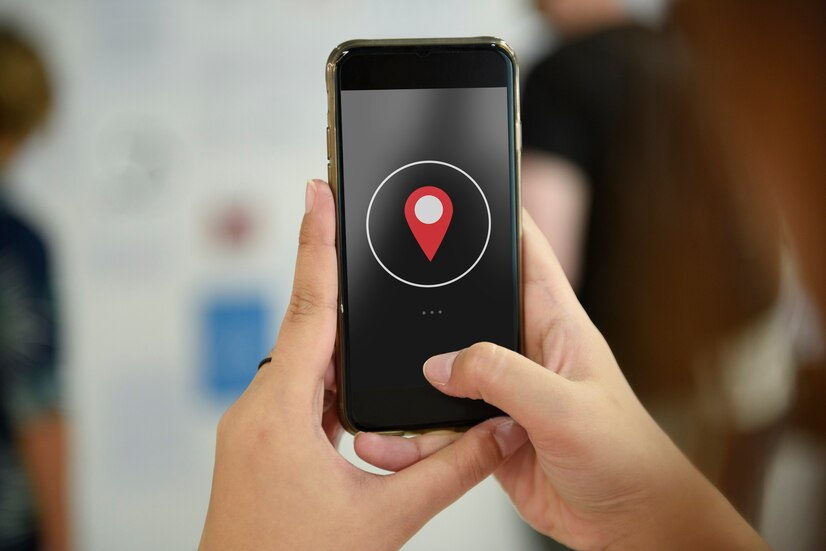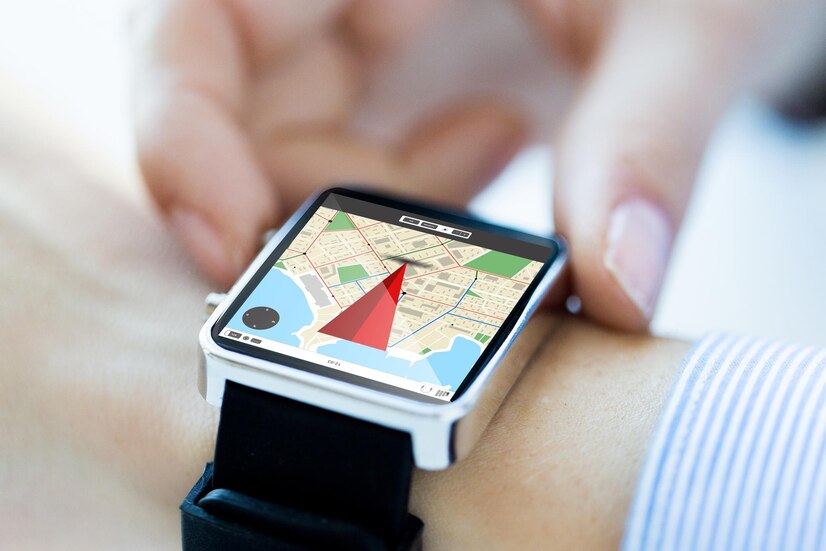
How To Track Your Kids Using GPS Trackers?
Being parents, it is our topmost priority to think about the security and protection of our children. There are dangers all around us, which justifies the need for GPS trackers.
GPS (Global Positioning System) technology uses satellites to pinpoint exact locations. These trackers can provide real-time information about your child’s whereabouts, giving peace of mind.
It’s easy to use a GPS tracker. Select a reliable device that fits your needs, like a wearable or discreet one to hide in backpacks or clothing. Set up the device and configure it to your preferences.
Trackers offer many features like real-time location monitoring, geofencing, and SOS buttons. Geofencing sets virtual boundaries and alerts if your child goes beyond them. SOS buttons allow your child to communicate with you in emergencies.
Emily Williams from New York, a concerned mother who used a discreet GPS tracker to keep an eye on her 7-year-old daughter Lucy. One day, construction caused a detour on Lucy’s way home from school. Emily received an alert on her phone and was able to guide Lucy through the unfamiliar path, averting any potential harm.
What are GPS trackers?
GPS trackers are incredible devices that have changed the way we locate and trace objects or people. These compact devices use satellite signals to give exact and real-time location information. They come with features like geofencing, SOS alerts, and retrospective tracking info, providing a special level of security and peace of mind.
Thanks to technology, GPS trackers have become smaller, more efficient, and easier to use. Making them suitable for various applications such as vehicles, pets, and, most importantly, children. Parents can now easily keep an eye on their kids’ whereabouts.
Not only do GPS trackers give the assurance that kids are secure and safe, but they also provide easy contact. Many modern trackers have two-way communication functions, allowing parents to talk with their children when needed.
GPS trackers possess one unique feature: geofencing. These tailored spots can be used to set up virtual boundaries in certain locations, like schools or parks. If the child goes outside these boundaries, parents get an alert by text or email. This feature adds an extra layer of safety, warning parents if their kids wander off or go into restricted or unsafe areas.
Sarah, a concerned mom, is a perfect example of how GPS trackers work. One day, her daughter Emily went missing while walking home from school. Sarah was frantic and searching for answers. She remembered the Family1st GPS tracker Emily had on her backpack.
By using the live tracking feature on her smartphone app, Sarah could determine Emily’s position in just a few minutes. With the help of the GPS tracker, Emily was found safe at a nearby playground where she had gone without realizing how far.
This incident shows how GPS trackers can be an essential tool for parents who desire peace of mind and want to be proactive in keeping their kids safe.
Importance of tracking your kids
The safety and well-being of children is of utmost importance. In today’s fast-paced world, with new risks emerging every day, GPS trackers offer parents a way to track kids’ whereabouts and ensure their security.
Parents can keep an eye on their kids’ location in real-time. Knowing that they can monitor their movements gives parents peace of mind and allows kids the freedom to grow.
GPS trackers also provide an added layer of security in case of emergencies. Parents can quickly locate kids if they get lost or find themselves in potentially harmful situations.
GPS trackers foster open communication. Parents can discuss usage with kids and set clear boundaries. It’s an opportunity to teach them about personal safety, responsibility, and trust.
To make the most out of GPS tracking devices, parents should:
- Set rules: Establish guidelines with kids regarding when and where the tracker should be worn or used.
- Discuss privacy: Have an open conversation about privacy boundaries and explain why using a GPS tracker is important.
- Teach responsible usage: Explain the significance of regularly charging the device and not misusing or tampering with it.
- Review data: Periodically sit down with kids to review the location data. Discuss areas they frequent, potential risks, and how they can stay safe.
Related: 10 Best GPS Tracker For Kids Shoes – Keep Your Kids Safe
Choosing the right GPS tracker
Let’s get into some details. Make sure the tracker is right for you. It should be user-friendly and have an intuitive interface.
Moreover, it should be reliable and accurate in location data. Check customer reviews for this.
Lastly, think of cost. Choose a device that’s good value without sacrificing quality.
So, ponder these points:
- Think about what features are most important that’ll help you pick.
- Research manufacturers- Opt for trustworthy brands with good customer support.
- Ask around to get opinions and experiences from those who’ve used similar devices.
It’s an important decision to choose the right GPS tracker for your kids. Consider ease of use, accuracy, and cost to find the perfect one for safety and peace of mind.
Setting up the GPS tracker

- Choose the right GPS tracker for your needs.
- There are many options, so do your research!
- Install the software or app, activate and connect it.
- Configure the settings according to your preferences.
- Attach it securely to your child’s belongings.
- Test the GPS tracker by tracking in real-time.
Extra features like SOS buttons and two-way communication can provide an added layer of security.
A story of a mother locating her son in a crowded mall thanks to a GPS tracker highlights its importance.
Setting up a GPS tracker may seem daunting, but by following these steps, parents can ensure their children’s safety. Consider investing in one and rest easy, knowing you have an extra layer of protection.
Understanding GPS tracking features
GPS trackers are super helpful for parents who need to keep an eye on their kids. Understanding the device’s features can help parents feel secure about their child’s safety.
- Real-Time Location Tracking – Track your kid’s exact spot anytime.
- Geofencing – Set virtual boundaries so you get an alert if they cross them.
- SOS Button – In case of an emergency, your child can send out a distress call.
- History Tracking – See a record of their movements throughout the day.
Plus, extra features like two-way communication, voice monitoring, and fitness tracking make the device even better.
Tips for making the most of GPS trackers:
- Set boundaries and talk about them.
- Discuss privacy.
- Regularly review tracking data.
- Let your child get involved in decision-making.
By using these features and tips, parents can stay updated on their kids’ whereabouts without sacrificing trust.
Using the GPS tracker to track your kids
A GPS tracker can offer parents peace of mind and assurance about their children’s safety. Here are four points to keep in mind when using one:
| – Precision: | GPS trackers provide accurate location info, so you’ll always know where your kids are. |
| – Real-time updates: | You’ll get live updates on your children’s whereabouts. |
| – Geo-fencing: | Some trackers let you create virtual boundaries or “safe zones”. If your kids leave these areas, you’ll be alerted. |
| – Emergency features: | Some GPSs have buttons that kids can press in emergencies. |
Plus, modern trackers usually have excellent battery life. You can track where your children go without invading their privacy.
Pro Tip: Before using a GPS, have a talk with your kids about why you’re doing it. Trust and communication are vital.
Privacy concerns and precautions
It is crucial to get parental consent before using a GPS device to track a child. Plus, healthy communication and trust between parents and kids are essential for making sure everyone feels respected. To ensure privacy while tracking your kids with GPS devices, consider the following:
- Use secure passcodes, both for the GPS tracker app and the associated accounts.
- Activate two-factor authentication, when possible.
- Stay updated with the newest firmware releases for the GPS tracker device.
- Make sure the app for tracking your child’s GPS device comes from a trusted source and has good user reviews.
- Utilize the geofence feature to create virtual boundaries that fit with your child’s routine.
- Talk to them about how and why you are using the GPS device, emphasizing safety and their well-being.
By following these steps, you can protect your child’s privacy while still tracking their location.
Conclusion
This article is here to show you the best way to follow your kids with GPS trackers. We discussed the advantages, different kinds of GPS trackers, and the importance of privacy. Let’s end our chat with some last thoughts.
When it comes to keeping our kids safe, GPS trackers are a great help. They give parents peace of mind by allowing them to track their kids in real time. But it’s important to remember to respect their privacy too.
GPS trackers are a great way for parents in today’s digital age to keep their kids safe. There are different forms, like watches or tags, that can go on their stuff. They have features like SOS buttons for emergencies and geofencing, which will tell you if your kid goes outside of your pre-set area.
It’s important to talk to your kids about safety measures. Involve them in the conversation and let them know you’re there to listen. Doing this will help make sure everyone feels comfortable.
Let me tell you a story about Lisa and her 10-year-old daughter, Amy. Amy started walking home from school by herself, and Lisa was a bit worried. She got a GPS tracker for Amy’s backpack. One day, Lisa noticed Amy was late coming home, and she got anxious. But the GPS tracker showed Amy was at the park helping a bird. It was a great example of how GPS trackers can be useful and how conversations about safety are important.
Frequently Asked Questions
1. How do GPS trackers work for tracking kids?
GPS trackers use satellite and advanced technology to determine the location of your child in real time. They communicate with GPS satellites to triangulate the position and provide updates to your smartphone or computer.
2. Is It Safe To Use GPS trackers For kids?
In simple words, GPS trackers are quite secure for kids. They are designed to be worn discreetly and securely, and many models also offer geofencing and SOS features for added safety. However, it’s important to use them responsibly and respect your child’s privacy.
3. How accurate are GPS trackers for tracking kids?
GPS trackers can provide accurate location information within a few meters, depending on the quality of the device and surrounding conditions. However, factors such as tall buildings or dense forests may impact accuracy in some cases.
4. Is It Possible To Turn Off GPS trackers or tamper with them?
Most GPS trackers for kids are designed to be tamper-resistant, with secure wristbands or attachments that make it difficult to remove them without authorization. Additionally, many trackers send notifications to parents if they are taken off or tampered with.
5. Do GPS trackers have any additional features?
Yes, many GPS trackers offer additional features such as geofencing, which allows you to set virtual boundaries and receive alerts if your child strays beyond them. Some trackers also have SOS buttons that kids can press in case of emergencies.
6. For how long does the tracker battery keep working?
GPS trackers have a battery life that varies based on the application and model. A few of them can last up to several days before requiring a recharge, while others have to be charged daily. It’s important to consider battery life when choosing a tracker for your child.
Read Also:
Already have an account?
Sign In
Create your account
User added successfully. Log in








